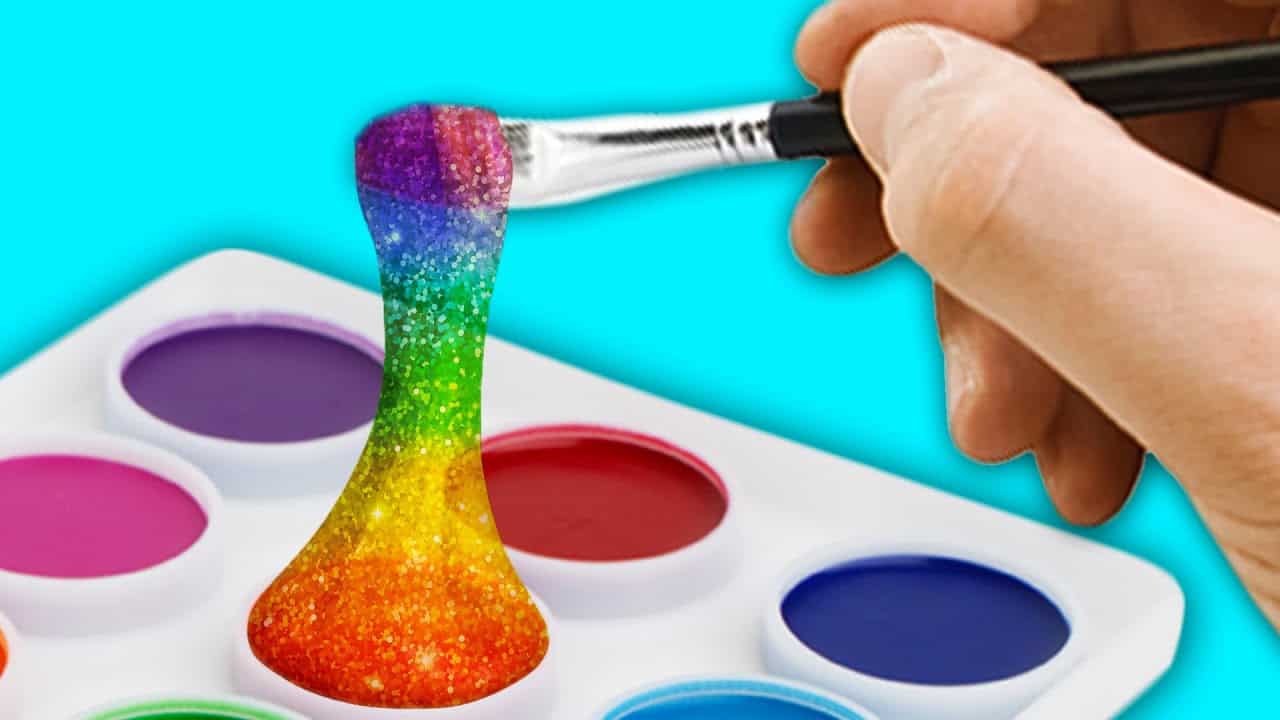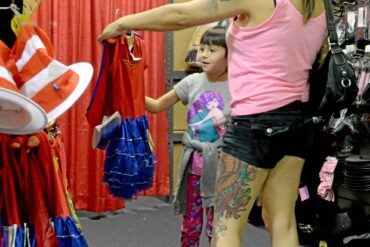Creative and Cool Art Projects to Ignite Your Child’s Imagination
Hello, creative families! Are you searching for ways to spark your child's creativity and keep those little hands busy? Look no further! We’ve gathered a treasure trove of cool art projects guaranteed to provide endless fun and learning experiences. So grab your art supplies, and let’s dive into a world of color, imagination, and artistic expression!
The Benefits of Art in Childhood Development
Before we unleash the rainbow of art project possibilities, let’s talk a bit about the incredible benefits that art brings to a child’s development. Art isn’t just a way to pass the time; it’s a vital part of growing up. It helps enhance fine motor skills, boosts self-esteem, encourages creative thinking, and provides a wonderful outlet for self-expression. Remember, it’s not about the end product but the process and the joy it brings to your little ones!
Easy Art Projects to Start With
Let’s kick off your art adventure with some simple yet super cool projects that are perfect for children of all ages. These ideas won’t require fancy supplies or hours of prep time, and they’ll deliver oodles of enjoyment. Ready to get artsy?
1. Homemade Playdough Extravaganza
Homemade playdough is not only a blast to make, but it’s also a fantastic medium for sculpting. With just a few household ingredients, you can whip up a batch of colorful, non-toxic dough that provides a sensory play experience. Your kiddos can roll, squish, and craft to their hearts’ content, entertaining themselves for hours on end.
2. Nature-Inspired Collages
Grab a glue stick and step outside to explore the wonders of nature. Collect leaves, flower petals, twigs, and whatever else catches your eye. Then, arrange your finds onto a piece of construction paper for a unique, textural work of art. It’s an eco-friendly and educational activity that can teach kids about the natural world while flexing their artistic muscles.
3. Rainbow Bubble Wrap Prints
Bubble wrap isn’t just for packing—it’s a fantastic tool for making art! Paint a piece of bubble wrap with stripes of rainbow colors, and then gently press paper onto it to create a one-of-a-kind print. Kids love the popping sensation under their fingers and the surprise reveal of their colorful creation.
Tapping into Technology: Digital Art Projects
In today's digital age, art has taken on new forms, and it’s important to nurture digital creativity alongside traditional art methods. Let’s look at some cool digital art projects that are suitable for your tech-savvy kiddos.
1. Virtual Reality Drawing
If you have a virtual reality headset, you can download apps that allow your children to draw and create in a 3D space. The immersive experience is unlike any other art form, and it’s an excellent way for kids to explore spatial awareness and architectural design.
2. Animation Made Simple
There are numerous user-friendly apps and software that can teach kids the basics of animation. They can start by creating simple GIFs or move on to more complex projects as their skills grow. Animation is a perfect blend of storytelling and visual art, and it could inspire the next generation of filmmakers!
Art Projects for Different Age Groups
Now, let’s tailor our creative journey to suit different age groups. After all, what fascinates a toddler can vastly differ from what engages an older child. Read on for age-appropriate art projects that pack a cool factor punch!
Toddlers and Preschoolers
Art projects for little ones should be safe, simple, and sensory-based. Think finger painting, sticker art, or gentle clay modeling. Always use non-toxic, washable materials and focus on the tactile experience. Little ones are just beginning to explore their artistic abilities, so the key is to make it as fun and hands-on as possible.
School-Aged Kids
As children grow, their art projects can become more intricate and involved. They’re ready to take on challenges like learning basic drawing techniques, experimenting with watercolors, or even starting a simple scrapbook. These activities not only support their growing dexterity but also encourage them to think more critically and develop their unique artistic style.
The journey into art is a beautiful and boundless adventure, filled with opportunities for learning, growth, and fun. Stay tuned for more imaginative art project ideas that will keep your kids engaged and excited about their artistic pursuits. Remember, when it comes to creativity, the sky’s the limit, and every splash of paint is a step towards a masterpiece.

5 Things Parents Should Know When Preparing for Cool Art Projects
Before you dive into the playful world of art with your kiddos, here are five essential tips to help ensure a smooth and joyful experience:
1. Set Up a Creative Workspace
Choose an area that’s easy to clean and where a little mess isn’t a big deal. Cover surfaces with newspapers or a plastic tablecloth to protect them. Having a dedicated space for art tells your child that you value their creative endeavors—and it helps keep the rest of your home sparkly clean!
2. Gather the Right Materials
Have a variety of age-appropriate art supplies on hand. Your kids’ imagination may know no bounds, but safety comes first. Stock up on washable, non-toxic paints, markers, and glues. And don’t forget the power of recyclables—cardboard tubes, bottle caps, and egg cartons can become the building blocks of masterpieces!
3. Dress for Success
Clothes will get dirty, so make sure your child is dressed in outfits that are ready for a paint splatter or two. Aprons, old t-shirts, or smocks are perfect for shielding those adorable outfits from artistic “oopsies.”
4. Focus on the Process, Not the Product
Art is about expression and exploration, not perfection. Encourage your child to enjoy the act of creation without worrying about the outcome. Praising effort rather than the finished look fosters a love for art and builds confidence in their abilities.
5. Be Ready to Display and Discuss
Show that you’re proud of your child’s work by displaying it prominently. Hang paintings on the fridge, turn sculptures into centerpieces, and make a gallery wall. Discussing their work can also provide insights into their thoughts and feelings—plus, it’s a great way to engage and connect with them.
Equipped with these pro tips, you’re all set to jumpstart your child’s creative journey. Let the wonder of art take center stage in your home, and watch as your little artists bloom before your eyes. The memories you’ll make and the skills they’ll learn are worth every drop of paint and sprinkle of glitter!
More Imaginative Art Project Ideas
Can’t get enough? Here are even more cool art activities to add to your family’s creative repertoire:
Mixed Media Canvas
Combine painting with collage for a stunning mixed media piece. Use old magazines, fabric scraps, and even plastic trinkets to create a textured, layered artwork that tells a story.
DIY Stamps
Carve designs into potatoes or foam sheets to make bespoke stamps. Dip them in paint and stamp away to create custom patterns on paper, fabric, or even walls if you’re feeling adventurous!
Recycled Robot Relays
Transform various recyclables into quirky robot sculptures. Boxes, cans, and wires can become the body, head, and limbs of your child’s very own robotic creation.
Dream Catchers
Get woven into the world of dream catchers. Explore the cultural history behind them and then use hoops, yarn, beads, and feathers to craft a personal dream catcher for your child’s room.
With these art projects, the fun never has to end. Unleash the potential of those vibrant colors and materials, and let your child’s imagination soar to new heights. Each project is not just about making something amazing—it’s about the beautiful moments created along the way. Let art be the gateway to curiosity, learning, and shared smiles in your family!
See more great Things to Do with Kids in New Zealand here. For more information see here
Disclaimer
The articles available via our website provide general information only and we strongly urge readers to exercise caution and conduct their own thorough research and fact-checking. The information presented should not be taken as absolute truth, and, to the maximum extent permitted by law, we will not be held liable for any inaccuracies or errors in the content. It is essential for individuals to independently verify and validate the information before making any decisions or taking any actions based on the articles.




